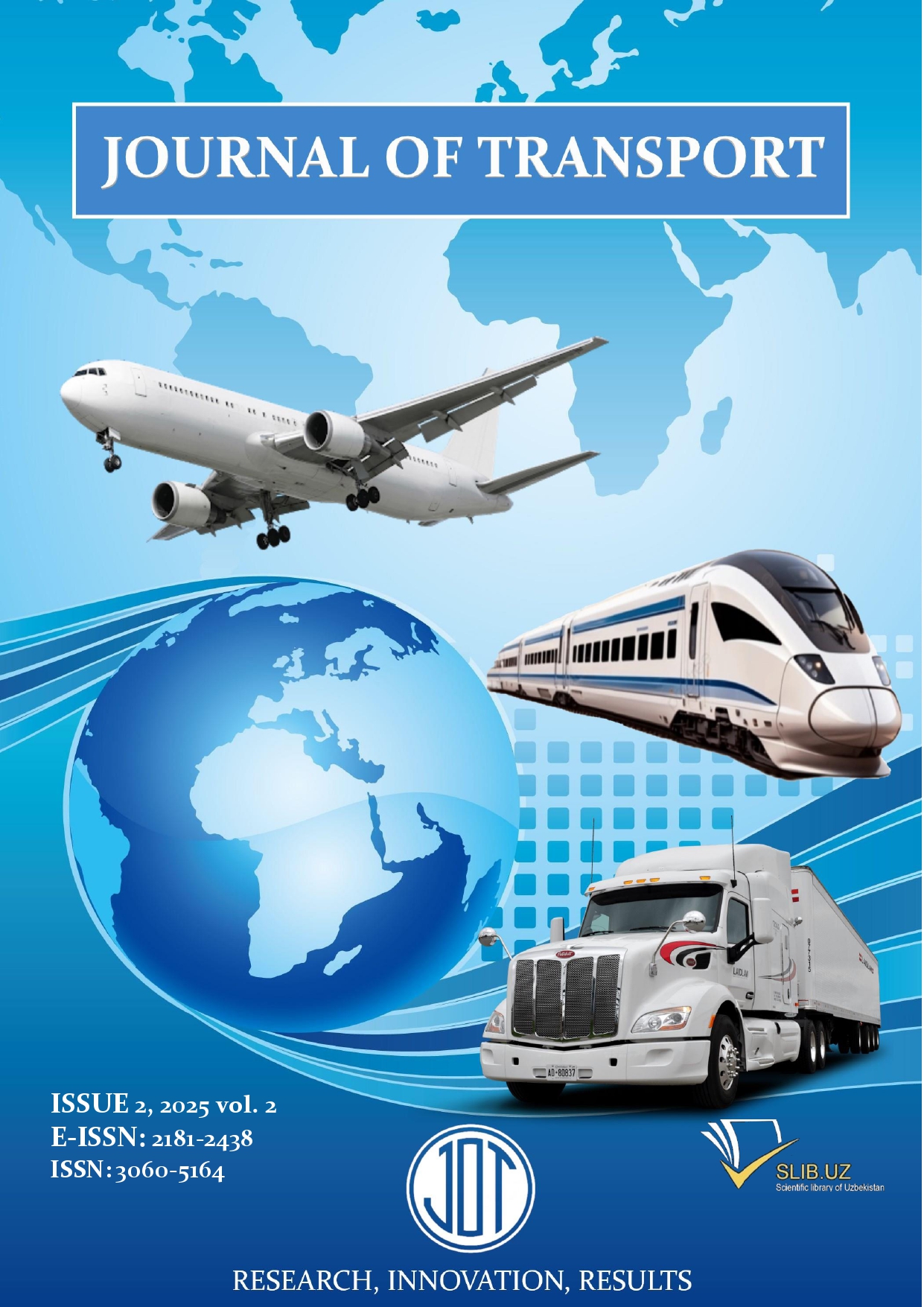Sanitary and hygienic evaluation of working conditions and noise characteristics of equipment in the metalworking shop of the Tashkent passenger railcar construction and repair plant
Abstract
The article evaluates noise pressure levels at workplaces in the forging shop of the Tashkent Passenger Railcar Construction and Repair Plant in accordance with the requirements of GOST 12.1.050–86. Measurements were conducted using “Assistent” and “Octava–110A” noise meters, both certified and compliant with GOST 17187–81. The noise pressure levels emitted from the equipment were measured after identifying the background noise from adjacent shops. Background noise levels were recorded at three key points: the geometric center of the shop, opposite the open door of the adjacent mechanical shop, and 1 meter inside the entrance gate. Based on the collected data, tables, graphs, and diagrams were analyzed. The analysis revealed that the background noise from the mechanical shop exceeds sanitary norms by 1–12 dB in the 125–8000 Hz frequency range. At low frequencies, the noise pressure from the forging hammer was relatively evenly distributed, while at medium and high frequencies, it was predominantly directed toward the operator's position and the rear side of the equipment. Due to the rear side's proximity to a wall, sound waves reflected from the surface combined with direct noise, resulting in increased pressure levels. In such cases, to effectively reduce noise, it is recommended to use acoustic barriers and sound-absorbing screens. Placement of these elements should be based on the analysis of noise propagation directions, particularly in areas where high-frequency noise is concentrated—such as around the operator and near the rear wall of the equipment.
References
[2] ГОСТ 12.1.050–86. Межгосударственный стандарт. ССБТ. Методы измерения шума на рабочих местах. – Москва: Изд-во стандартов, 1986. – 11 с.
[3] ГОСТ 17187–81. Шумомеры. Общие технические требования и методы испытаний. – Москва: Изд-во стандартов, 1982. – 12 с.
[4] ISO 3745:2012. Acoustics — Determination of sound power levels of noise sources using sound pressure — Precision methods for anechoic and hemi-anechoic rooms. – Geneva: International Organization for Standardization, 2012. – 34 p.
[5] ISO 11201:2010. Acoustics — Noise emitted by machinery and equipment — Determination of emission sound pressure levels at a work station and at other specified positions — Engineering method in an essentially free field over a reflecting plane. – Geneva: ISO, 2010. – 38 p.
[6] O‘zR SanQvaN 0267:2021. Ishlab chiqarish korxonalaridagi shovqin. Gigiyenik me’yorlar va o‘lchash usullari. – Toshkent: SSV Respublika sanitariya-epidemiologik osoyishtalik va jamoat salomatligi qo‘mitasi, 2021. – 24 b.
[7] Sunnatulla Sulaymanov. Criterion For Vibroacoustic Activity of The Main Sources of Cotton Machines //Fifteen International Conference on Thermal Engineering: Theory and Applications May 28-June 1, 2024 Tashkent, Uzbekistan.
[8] Sulaymanov S. Improving conditions and labor protection of operators by improving the vibroacoustic parameters of mobile cotton machines. dissertation of Doctor of Engineering. Sciences-St. Petersburg, 1992.-250 p.
[9] Nikiforov A.S. Acoustic design of ship structures: Handbook. - L.: Shipbuilding, 1990. - 220 p.
[10] Nikiforov A.S. Acoustic design of ship structures: Handbook. - L.: Shipbuilding, 1990. - 220 p.
[11] Pobol O.N. Noise in the textile industry and methods to reduce it. U,: Legprombytizdat, 1987. – 144.





